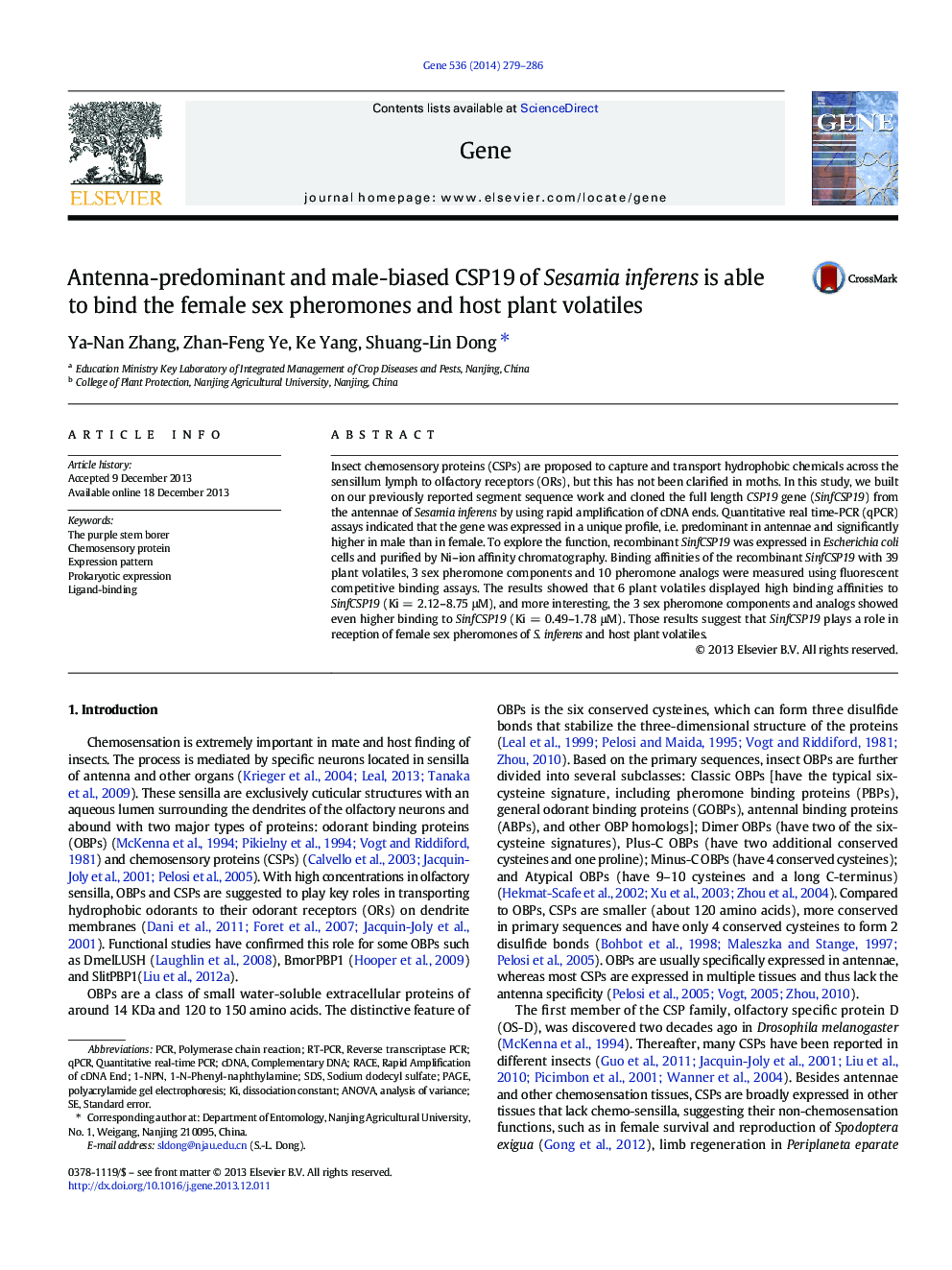| Article ID | Journal | Published Year | Pages | File Type |
|---|---|---|---|---|
| 5905864 | Gene | 2014 | 8 Pages |
Abstract
Insect chemosensory proteins (CSPs) are proposed to capture and transport hydrophobic chemicals across the sensillum lymph to olfactory receptors (ORs), but this has not been clarified in moths. In this study, we built on our previously reported segment sequence work and cloned the full length CSP19 gene (SinfCSP19) from the antennae of Sesamia inferens by using rapid amplification of cDNA ends. Quantitative real time-PCR (qPCR) assays indicated that the gene was expressed in a unique profile, i.e. predominant in antennae and significantly higher in male than in female. To explore the function, recombinant SinfCSP19 was expressed in Escherichia coli cells and purified by Ni-ion affinity chromatography. Binding affinities of the recombinant SinfCSP19 with 39 plant volatiles, 3 sex pheromone components and 10 pheromone analogs were measured using fluorescent competitive binding assays. The results showed that 6 plant volatiles displayed high binding affinities to SinfCSP19 (Ki = 2.12-8.75 μM), and more interesting, the 3 sex pheromone components and analogs showed even higher binding to SinfCSP19 (Ki = 0.49-1.78 μM). Those results suggest that SinfCSP19 plays a role in reception of female sex pheromones of S. inferens and host plant volatiles.
Keywords
SDS1-NPNqPCRRT-PCRPAGEcDNAComplementary DNAReverse transcriptase PCRpolyacrylamide gel electrophoresisExpression patternProkaryotic expressionanalysis of varianceANOVARapid amplification of cDNA endDissociation constantstandard errorsodium dodecyl sulfateLigand-bindingRacepolymerase chain reactionquantitative real-time PCRPCRchemosensory protein
Related Topics
Life Sciences
Biochemistry, Genetics and Molecular Biology
Genetics
Authors
Ya-Nan Zhang, Zhan-Feng Ye, Ke Yang, Shuang-Lin Dong,
